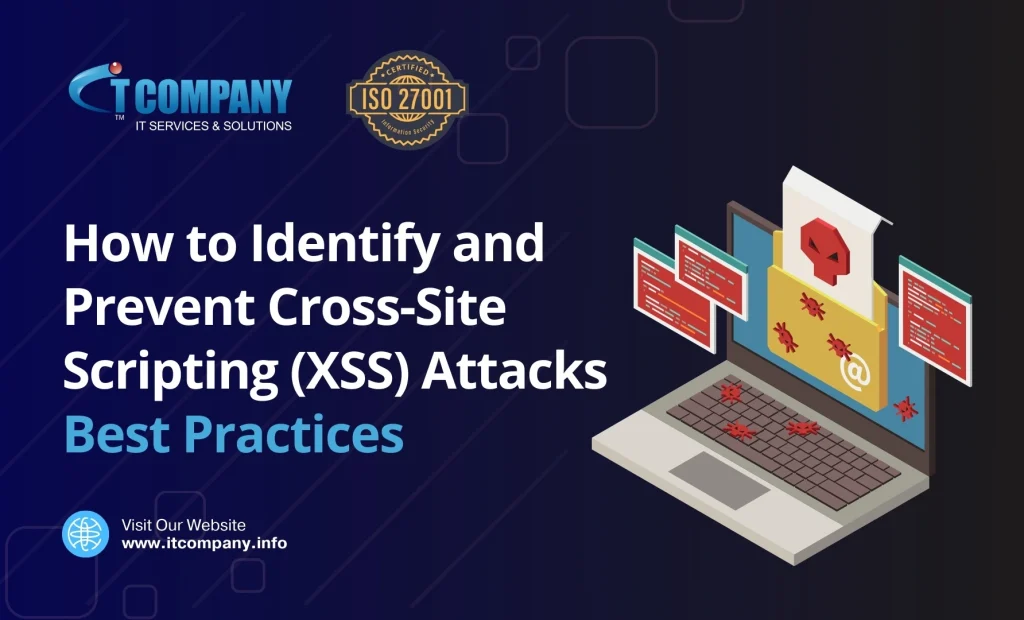
Table of Contents
ToggleIntroduction
Cross-site scripting Hack (XSS) is an online security issue where attackers gain control of a website and interfere with how users interact with it. It’s not a file or a virus but a piece of malicious code that attackers inject into existing website files. We’ll explain how this injection happens later.

XSS is a serious security vulnerability because it allows attackers to steal sensitive information, such as passwords and cookies. They can also hijack user accounts by accessing session cookies or manipulate what users see by displaying fake messages or forms.
For example, attackers might show fake forms to collect sensitive information like credit card details.
Mitigation Strategies
To mitigate XSS attacks and protect web applications, we have implemented and planned the following strategies:

Input Validation
Sanitize Input
Sanitizing user input means making sure that any information a user provides is cleaned up before it’s used by the website. This helps prevent harmful code from being injected into the website. Here’s a simple way to understand it:
Example: Sanitizing User Input
Imagine a website has a comment section where users can leave messages. Without proper sanitization, a user might enter something like this.
HTML Code
<script>alert(‘Hacked!’);</script>
If this comment is displayed on the website without any changes, the code <script>alert(‘Hacked!’);</script> would run when someone views the comment, showing a popup message that says “Hacked!” This is an example of an XSS attack.
Sanitizing Input:
To prevent this, we need to clean up the user’s input before showing it on the website. Here’s how we do it:
- Escape Special Characters: Convert special characters like <, >, and & into safe versions. For example:
- < becomes <
- > becomes >
- & becomes &
- Display the Cleaned Input: When displaying the user’s comment, the sanitized version will be shown instead of the harmful code.
Example:
Sanitized version:
html
Copy code
<script>alert(‘Hacked!’);</script>
When this sanitized input is displayed on the website, it will appear as:
html
Copy code
<script>alert(‘Hacked!’);</script>
But it will not be executed as code; it will just show up as plain text. This way, you protect your website from harmful attacks while still allowing users to leave comments.
White-listing:
Whitelisting input means setting up rules that only allow specific, safe types of input from users. Instead of trying to block harmful input (blacklisting), you define what is acceptable and reject everything else. Here’s how it works in simple
Imagine you have a form on your website where users can enter their age. You only want to accept numbers between 0 and 120. Here’s how you can use whitelisting to ensure only valid input is accepted:
- Define What’s Allowed: You decide that only numbers within the range 0 to 120 are valid. This is your whitelist.
- Validate Input: When a user submits their age, the form checks the input against this whitelist:
- Acceptable Input: If the user enters 25, the input matches the whitelist rules and is accepted.
- Rejected Input: If the user enters abc or 150, the input does not match the whitelist rules and is rejected.
How It Works in Practice:
- Create a List of Allowed Patterns:
- For a username, you might allow only letters and numbers and limit the length to 3-20 characters.
- For an email address, you ensure the input follows the pattern of a valid email format.
- Check User Input Against These Patterns:
- For a username: Check if it only contains letters and numbers and is the correct length.
- For an email: Check if it contains an @ symbol and a domain name.
Example:
If you’re designing a registration form where users enter a username, you might whitelist only alphanumeric characters (letters and numbers) and limit the username to a certain length:
- Allowed Input: JohnDoe123
- Rejected Input: John!Doe@123 (contains special characters) or an empty username.
- Output Encoding
Output Encoding
Implement
- HTML Encoding : Safe user-interface
- JavaScript Encoding: Better user interaction
- URK Encoding : Secure Address
1. HTML Encoding
When displaying user data in HTML, special characters need to be encoded so they don’t break the HTML structure or run as code.
- Why: Characters like <, >, &, and ” have special meanings in HTML. If they’re not encoded, they could be interpreted as HTML tags or entities.
- How: Replace these characters with their HTML entities:
- < becomes <
- > becomes >
- & becomes &
- ” becomes "
Example:
- User Input: <script>alert(‘Hacked!’);</script>
- Encoded Output: <script>alert('Hacked!');</script>
This ensures that the code is displayed as text rather than executed.
2. JavaScript Encoding
When including user data in JavaScript code, you need to ensure that it doesn’t accidentally execute as code.
- Why: User input could contain characters that are interpreted as part of a JavaScript script, potentially leading to code injection.
- How: Escape special characters in JavaScript strings:
- ” becomes \”
- ‘ becomes \’
- \ becomes \\
- Newline characters become \n
Example:
- User Input: alert(‘Hacked!’);
- Encoded Output: alert(\’Hacked!\’);
This way, the input is treated as a string rather than executable code.
3. URL Encoding
When including user data in URLs, it needs to be encoded to ensure it doesn’t interfere with the URL structure or introduce vulnerabilities.
- Why: Characters like ?, &, and = have special meanings in URLs. If not encoded, they might alter the URL’s structure or functionality.
- How: Replace these characters with their percent-encoded forms:
- (space) becomes %20
- ? becomes %3F
- & becomes %26
- = becomes %3D
Example:
- User Input: search?query=hack&sort=asc
- Encoded Output: search%3Fquery%3Dhack%26sort%3Dasc
Benefit: User-input is treated as data, not as part of the URL.
Conclusion
In today’s digital world, the need for website repair services has never been greater. Cross-Site Scripting Hack (XSS) demonstrates how hackers can exploit vulnerabilities in your site for malicious purposes.
To protect your valuable assets, it’s crucial to implement a comprehensive approach, including thorough input validation and careful output encoding.
If you’re facing XSS issues and need expert assistance, IT Company – ISO 27001 is here to help. With over 17 years of experience, we provide the expertise necessary to secure your website.
Ready to safeguard your site and explore our full range of services? Contact us today to learn more and discover how we can support your security needs.
FAQs
What is Cross-Site Scripting Hack (XSS)?
What is an example of XSS?
What is XSS and its types?
Stored XSS: Malicious code is stored on the server and executed when users access the compromised data.
Reflected XSS: Malicious code is reflected off a web server, typically through URLs or request parameters.
DOM-Based XSS: The vulnerability exists in the client-side code (JavaScript), which modifies the DOM without proper validation.